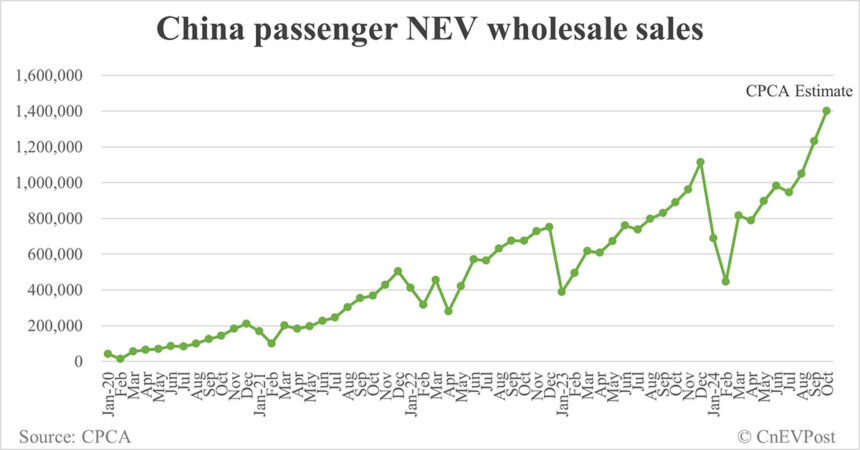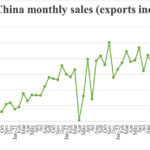China’s automotive market is experiencing a new wave of growth momentum, thanks to the implementation of car replacement subsidy policies in all provinces across the country. The China Passenger Car Association (CPCA) reported that wholesale sales of new energy vehicles (NEVs) in October reached an estimated 1.4 million units, marking a 58 percent year-on-year increase and a 14 percent month-on-month increase.
In September, manufacturers with wholesale sales exceeding 10,000 passenger NEVs accounted for 92.7 percent of all wholesale NEV sales. These leading carmakers are projected to have sold 1.3 million units in October, contributing to the overall estimate of 1.4 million units for the month. This marks the fourth consecutive month that China’s monthly NEV wholesale sales have surpassed 1 million units.
NEVs in China include battery electric vehicles (BEVs), plug-in hybrid electric vehicles (PHEVs), and fuel cell vehicles. The exact breakdown of these sales will be announced later this month. The CPCA noted that NEVs played a significant role in driving vehicle consumption growth in October, with consumers showing a preference for these environmentally friendly models.
The CPCA’s survey revealed that more than 60 percent of consumers opted for NEVs when purchasing new cars through trade-ins. Entry-level pure EVs and plug-in hybrids saw strong growth in demand. Among major carmakers, BYD, Geely, and Tesla China stood out with wholesale sales of 500,526, 108,722, and 68,280 units respectively in October.
Tesla China’s sales figures saw a slight decline of 22.69 percent compared to September, indicating fluctuations in the market. However, overall, the NEV market in China is showing promising growth trends, fueled by government subsidies and policies aimed at promoting auto consumption.
The automotive industry in China is poised for continued expansion, driven by the increasing demand for NEVs and the supportive policies put in place by the government. With a focus on sustainability and innovation, Chinese carmakers are well-positioned to capitalize on this growing market segment and contribute to the country’s goal of reducing carbon emissions and promoting green transportation.







